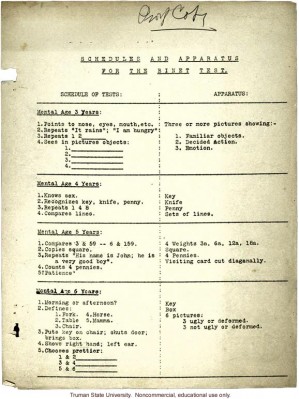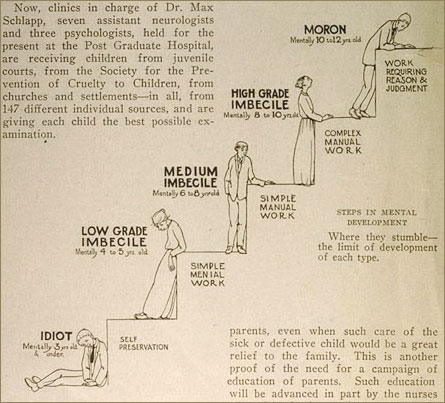The historiography of science, race, and gender in the US South and the legal-historico-scientific lessons it provides. This is Part 2 of 3. Read Part 1 here.
Family and religion are the two distinctive features of a traditional Southern society. Other commonly recognised regional characteristics are poverty, agrarianism, White racial supremacy, ethnic homogeneity, rigid social and economic class division, sectional pride, skepticism towards science, the restricted role of the woman outside the home, and disease.
However, one has to be cautious in concluding that the South is a nation apart, because by the 1930s, the region was becoming more like the rest of America.
In the leading series on Southern history, Woodward named his comprehensive study of the period Origins of the New South, 1877-1913 while Tindall used the title The Emergence of the New South for his history of the years 1913-45. Although neither author particularly liked the vague and shopworn term, both accepted the concept of a “New South” that was increasingly responsive to progressive economic, political, and social changes modeled on national standards.
What began as “wavering” in the Southern ranks soon became a “pell-mell rout,” according to Woodward, as “regiments and armies deserted to join up behind the common or American industrial ideal.” For some proponents of a New South and progressivism, eugenics offered a remedy for intractable regional social problems (see Larson, Edward J. Sex, Race, and Science: Eugenics in the Deep South, pg. 14).

Progressive reforms in the South moved separately from populism and the impulse of the agrarian revolt. A majority of the progressive reformers lived in the urban areas and hailed from a professional/middle-class of physicians, businessmen, scientists, engineers, and social workers. They believed in interventionism and organisation, as well as the application of scientific/social-scientific principles, the values of efficiency, and rationality. These progressives called for public authorities to assume interventionist responsibilities and eugenicists fitted well into this “progressive” mould (Larson, pg. 15).
Moreover, the North should be held accountable for propagating racialist views despite their attempts to dissociate from the South. In 1916, New York attorney, racist, and conservationist Madison Grant, published a book that was to become influential in the United States for the next two decades, The Passing of the Great Race. The book underwent many printings, and eventually sold 16,000 copies in the US.
In the book, Grant argues that the Nordic race is responsible for every outstanding accomplishment of civilisation and for all great civilisations. This was the kind of book that resonated in a decade when there was a tsunami of anti-immigrant and anti-black emotion in American culture and society, a high-water mark of popular racist feeling on part of the so-called white Anglo-Saxon Protestant Americans against groups they considered inferior to them.
Madison was not alone in his views, for even if the Northerners did not subscribe to actual segregation, many of the intellectual elites were convinced of the white man’s superiority, as one could discern from the academic publications on genetics and psychology, especially on intelligence testing, that came about throughout the 1920s, 30s and 40s. After all, the very generation of the IQ test was meant to prove the superiority of certain races over that of the other. Racial interpretations of IQ testing had been shielded from the 1900s to the 1920s through political campaigns to enforce segregation in the post-Reconstruction South, which was a consequence of emancipation. In the interwar years, American was largely racially segregated, as there was widespread belief that members of the minority — persons of colour — were inferior to the white Americans.
Of course, the eugenicist movement was not only about race, but also about the desire to rid society of the social-misfits; the imbeciles, feeble-minded, disabled and diseased. All of these were part of the sexual hygiene movement that had led to certain states to legislate against freedom of choice in marriage. There were already well-entrenched laws that prohibited marriages of persons that are underage, closely-related by blood or of different races. Many states maintained that a marriage involving a mentally ill or mentally retarded partner was either automatically void or voidable by either spouse on the traditional contract-law grounds that the mentally disabled partner lacked the ability to enter into a binding contract.
Eugenicists saw these laws as helping their cause, though they were aware of the severe limitations of these laws in serving their intent since the laws were not constructed to serve eugenics. According to Larson, only South Dakota and Nebraska went as far as what the eugenicists wanted by establishing a central registry for all their mentally disabled residents that precluded any listed individuals from obtaining marriage license unless they or their partners were sterile.
In arguing the ineffectiveness of the laws on marriage restrictions, the eugenicists such as Henry H. Goddard had argued that compulsory segregation was a must for all these “gross defectives.” Segregation allowed for the isolation of these feeble-minded and anti-social individuals into institutions or colonies where the two sexes could be kept apart, or have their reproductive cycles put under surveillance.
Goddard, as research director for the prestigious Vineland Training School for Feeble-Minded Children in New Jersey, became the leading architect of eugenic remedies. He wanted to prepare what he considered to be a “sanctuary” for them, where they were trained to be useful and happy citizens. To identify them, the Stanford-Binet test was used for the testing the IQ of these children. Through these tests, Goddard suggested that he was able to scientifically quantify the mental capacity of any individual, and gradated the mentally-disabled into high-level “morons,” middle-level “imbeciles,” and “low-level” idiots. Upon identification, these children needed to be institutionalised, and that might involve actual forced removal from their homes. Governments have to be responsible for building institutions to house all these children (Larson, pg 25). Racist eugenicists, particularly in the Deep South, had managed to extrapolate and link genetic inheritance of mental disability to miscegenation.

In the South, many women who entered into political activism, whether in the Temperance movement that later ceded into the suffragist movement or through the various women’s clubs, bought into the racial hygiene and anti-miscegenation views they were brought up with. Many of the female leadings lights were wives of prominent Southern politicians and started out supporting their husbands before becoming leaders in their own right (but mainly among other women). In addition, numbered among them were the staunchest supporters for segregation and the disenfranchisement of the African-American communities (even though there were a few who were more “progressive” in their views and believed in the power of the African-American women to affect positive changes in their community, but with the white woman’s guidance).
In the age of the suffrage, there were opposing camps of women in the movement; the white women who fought for the right to vote and for the right of space in the public sphere to speak their views while also voting against the equal rights of the blacks, and the black women who were working for the right to vote for themselves and their men folk (whose rights were taken away progressively towards the end of the nineteenth and early twentieth century in every Southern state). This can also be linked to some of the early suffragists’ concerns over the possibility of their states being flooded with the mentally disabled.
However, even before the eugenics movement reached the South, women had been part of the eugenics movement as researchers. A pioneering English eugenics biometrician, Karl Pearson, was a prominent advocate for gender equality and regularly hired female researchers for posts at the Galton Laboratory. Charles Davenport did the same for his Eugenics Records Office, which was established and maintained by a woman philanthropist, Mrs. E.H. Harriman. Davenport’s wife was herself a trained biologist and worked as assistant manager at the Office. Women also participated actively in the National Committee for Mental Hygiene.

However, among the main reasons women were chosen as researchers had less to do with feminist convictions than with the ingrained belief that eugenics research involved tapping into innate female quality; that they involved the sort of work that women inherently excel at. The first was the woman’s ability to souse out familial relationship. Secondly, it was the belief that women were more likely than men to be able to extract information from a stranger. Thirdly would be women’s willingness to work in subservient roles as assistants for less pay than men would (Larson, pg. 72-3).
It seems here as if a woman’s involvement in eugenics research and its propagation did not in any way break the patriarchal mold, since women were seen as beneficiaries (in terms of their ties to family) from learning how to choose the right mate to breed healthy, strong and intelligent children. Moreover, even if these women were provided equal amount of scientific training as that of their male colleagues, they did not get to become the “leading” thinkers in the field, and worked mainly as technicians to carry out the instructions of the “visionary” men. Hence, their role was not too different from the human (largely women) computers who worked in astronomy observatories and planetariums at around the same era, or the women “computers” who worked as code-breakers during the war.
Between 1915-1920, federated women’s clubs in every state in the Deep South had decisive roles in the establishment of eugenically segregated public institutions for the mentally disabled. It is ironic that the politically active Mississippi women who supported eugenics laws found themselves working together with the same House of Representative that persistently denied them the vote. If one were to even extrapolate the circumstances of women’s scientific involvement, one would come to realise that it was not about advancing humankind, but to play God in deciding who has the right to a good life versus who does not. It is about pre-determining an individual’s place in society’s narrative without any form of consent or active participation from these people whose lives are being decided upon. Hence, eugenics is compatible with anti-feminist sentiments. It was common practice to place women as minority stakeholders on the boards that directly controlled these institutions for the mentally disabled, thus not according them with much decision-making power.
Another ironic aspect of the eugenics movement in the Deep South was that it was centered on the White population and largely ignored those of the other races. Since racial segregation was already in force, white Southerners did not feel threatened by the race of the “feeble-minded” among the African-American population. All resources were concentrated on the “needy” whites and if the African-Americans were admitted, they were relegated to segregated dormitories that were vastly inferior to the ones given to the whites. There were Southern eugenicists who advocated for the building of separate institutions to house the mentally disabled blacks. Advocacies for the legalisation of sterilisation of these “underclass” were mainly targeted at “feeble-minded” whites. Even though blacks were not completely exempted from this possibility (and northern white eugenicists recommended sterilisation for the blacks since they could not be completely segregated in the same way as in the South), there was less urgency in dealing with the blacks as they were already considered an inferior race that would not contribute anything of significance to Western civilisation.
However, it was found that in institutions that also admitted African-Americans, there was a racial impact on the practice of sterilisation. In South Carolina for instance, between 1949 and 1960, from the 104 sterilisation processes performed, 102 were targeted at African-American women; that despite the fact that twice as many blacks as whites were admitted, and more men than women (Larson, pg 156-7). What this demonstrated was that the institutions of “scientific” practice are not free from cultural and political biases, especially in the selection of subjects and targets for any experiments, since these institutions comprised people (mainly men) with established prejudices. In fact, the discriminatory practices in the Deep South bore chilling resemblance to the experiments conducted in the Nazi prison camps. The South was also more active in advocating birth control for the African-American population due to the same belief that the reproduction of the latter population would have disastrous consequences on their society.
Concludes with Part 3 on Wednesday.
Clarissa is a graduate student in the US who works in the intersections of science studies, cultural studies, feminist theory and the digital humanities. She blogs at scandalousthoughts, among other places. She believes that Malaysia can learn much from the intellectual history of others.

Your article is very interesting. Thank you for the information.more info
It is the outcome of fear – fear of violence, fear of the unknown, fear of the unpredictable, the capricious, and the arbitrary. It is perpetrated by dropping subtle hints, by disorienting, by constant – and unnecessary – lying, by persistent doubting and demeaning, and by inspiring an air of unmitigated gloom and doom. Abuse Of An Insidious And Ominous Nature, is the fostering, propagation, and enhancement of an atmosphere of fear, intimidation, instability, unpredictability and irritation. There are no acts of traceable explicit abuse, nor any manipulative settings of control. Yet, the irksome feeling remains, a disagreeable foreboding, a premonition, a bad omen.
a well researched and thought out piece.
looking forward to the 3rd part to read all 3 at once!
Hi Nicole
Thanks for reading the article. I would like to hear what you think after having read all three, the last one just out today! :)